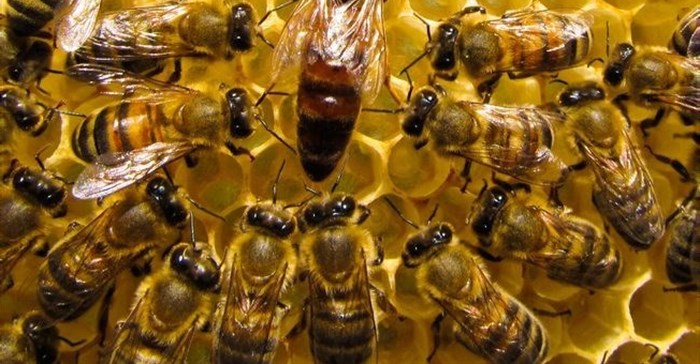
Top stories




HealthcareHIV funding still falls short of targets after pledges: what’s at stake
Melanie Bisnauth 14 hours


More news











But throughout the world, honey bees are disappearing at an alarming rate. Since 1990, more than 25% of the managed honey bee population in the US has disappeared.
Why is this happening? The decline has mainly been attributed to a phenomenon called colony collapse disorder (CCD). Although still poorly understood, it is thought to be caused by the combined effect of interrelated factors that weaken hive health.
These include shifting flowering seasons due to climate change, reduced floral diversity, use of pesticides, habitat loss, lack of genetic diversity, insect parasites and harmful microorganisms.
The beehive itself plays a key role in increasing honey bee resilience. Curiously though, the Langstroth hive most common among commercial beekeepers today is almost completely unchanged since its invention in the late 1850s.
A Langstroth hive provides a plethora of design opportunities to greatly benefit both bees and beekeepers. Beekeepers regularly inspect their hives to check the health of the colony, the laying pattern of the queen, the quantity of honey and to detect pests and diseases.
The inspection process involves disassembling the hive into almost all its component parts, inspecting each one and then reassembling the colony and moving onto the next.
This is a stressful and destructive process for honey bees and can temporarily weaken the colony and attract pests. For example, Small Hive Beetle hunts down hives by smell and then lays its larvae in the honeycomb.
The tools for opening the hive and the hive components themselves can be responsible for infection from bacterial diseases such as American Foulbrood, which can quickly destroy a healthy hive.
Underpinning the Langstroth hive’s modular design and movable comb frames is bee space – the goldilocks zone of space that is not so small that bees gum it up with their own building material propolis, and not so large that they try to build bracing honeycomb structures in between. A Langstroth hive is so practical that its design has not changed in almost 160 years, until now.
The crowdfunded FlowHive drains honey from a comb without requiring its removal. The brood of the colony still needs to be examined and monitored in the conventional way using protective gear and a smoker.
We are experimenting with bee-centred design. These are hives designed to provide a more natural equilibrium between bees and beekeepers. With the rise of the urban hobby apiarist, armed with a handful of open-source technology tools, the physical design of the beehive itself is in the spotlight of the makers and tinkerers.
Digital hive plans made available free online are in a continual state of iteration as FabLabs and maker spaces around the world create new 3D printed prototypes.
The focus of the maker movement is not limited to the physical design of the beehive, but is also increasingly introducing digital sensors.
With some early experiments in temperature and humidity monitoring in hives, a number of products and crowd funding campaigns have launched, offering beekeepers the ability to remotely monitor their hives on their smart phone.
These products offer hive weight readings so that beekeepers know when to harvest their honey, GPS locations for tracking stolen hives, even bee counters so that bee foraging patterns may be detected.
While these sensors have been used in other contexts, the ability to transmit and interpret datasets is new to beekeeping. This provides not just data but a suite of tools from which the health of a bee colony can be deduced.
While many such technology applications are still in their infancy, a vibrant community of artists, scientists and engineers are also designing systems that retrofit existing hives.
Professor Paulo de Souza, a CSIRO entomologist in Tasmania, is gluing tiny RFID chips to bees in a quest to track generational impacts of pesticide exposure and genetically modified pollen.
Anne Marie Maes, an artist in Brussels, is sampling sounds through hive embedded piezo-electric microphones. Her aim is to recognise hive health by identifying patterns in the audio datasets.
The EyesOnHives system uses cameras to optically track individual bee movements. Using an approach similar to image recognition systems, it develops day-to-day signatures of the bee activities from which changes in hive conditions can be detected early while remedy is still possible.
With digital sensors being introduced into the beehive, hive odours have yet to be investigated, despite advances in odour sensing technology and its application to identifying human disease, environmental toxicity and food contamination.
In our recent research, we are combining expertise in insect olfaction, analytical chemistry and environmental informatics to pioneer a new approach: odour sensing for early detection of honey bee disease.
We are trialling electronic nose technology to explore ways in which it can be used by beekeepers as citizen scientists. Odour sensing to monitor hive health provides an unprecedented opportunity to increase the resilience of our food system using sensor technology and data analytics.
The rapid decline of honey bees worldwide is one of the most significant losses of a single species humans have faced. By investigating the use of odour sensors for honey bee hive health, we want to enable beekeepers to capture real-time data for early diagnosis that can help prevent the catastrophic losses of honey bee populations in Australia and worldwide.
Research assistance provided by Dan Cook, industrial design student at QUT, who was awarded a Vacation Research Experience Scholarship to work on this research project.![]()

The Conversation Africa is an independent source of news and views from the academic and research community. Its aim is to promote better understanding of current affairs and complex issues, and allow for a better quality of public discourse and conversation.
Go to: https://theconversation.com/africa